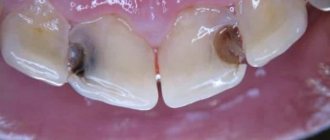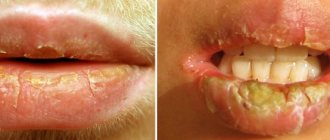Signs of Root Rotting
Root rot of orchids in the first stages of development does not affect their above-ground parts. The leaves of the flower can remain in good condition even when most of the roots have already rotted. Therefore, the rotting of the roots of this plant is easier to determine visually.
Most orchids growing indoors are epiphytes. They do without soil, and a substrate of pieces of bark and moss is necessary not for nutrition, but for fixing the plant in the pot. Also, for many types of orchids, transparent pots are used, in which the root system is clearly visible.
If you regularly inspect the plant, it will not be difficult to see the beginning of root rot.
Healthy orchid roots are silver-green in color , which changes to bright green after watering. Rotten roots have a yellow tint or darken and become soft. Over time, if the plants are not watered too intensively, they dry out.
When you try to pick off a dry root, a hard central vein remains. If an orchid has lost all its roots, its leaves eventually turn yellow and dry out, after which the plant dies.
Pain syndrome in the tooth root
If people have pain in the roots of their teeth, the help desk of a dental clinic will tell you what to do, but it is preferable to visit a medical facility and receive qualified help. The cause of the condition is an inflammatory process that develops against the background of infection.
Patients experience severe pain that cannot be tolerated for long. What to do in such a situation? There are two options to solve the problem.
Why do the roots of teeth hurt?
Despite this, many people still ignore symptoms and go years without visiting a dentist.
Rui Hizatugu, professor at the School of Professional Development of the Association of Dental Surgeons of São Paulo in Paulista, there are seven signs that cannot be ignored and indicate that it is time to go to the dentist. A US public health survey found that children lose more than 51 million hours a year due to dental problems. “Toothache is so poorly tolerated by young people that when they miss school, they also fail to pay attention to the issue,” says Dr. Tooth decay is the most common cause of toothache, which increases as the nerve of the tooth becomes more exposed.
- If the tooth is not severely damaged, complex treatment is carried out, thanks to which the nerve is preserved.
- The second option involves killing the nerve. The procedure is painful, so it is performed under local anesthesia. The patient will have to visit the dentist several times - it will not be possible to cope with the problem in one visit. When removing a nerve, the dentist uses arsenic, which is placed in a previously cleaned canal. Afterwards, a temporary filling is placed, which is removed during the patient’s return visit. At the last visit, the specialist makes a permanent filling for the patient from special medical cement or other material.
Why the roots of an orchid rot and how to avoid it
There are several reasons why the roots of indoor orchids begin to rot. The most likely of them:
- Improper watering of the plant;
- Insufficient lighting;
- Too intensive feeding;
- Substrate caking;
- Fungal infections.
Improper watering is the most common cause of rotting and loss of roots.
Root rotting occurs due to waterlogging of the substrate. Also, inexperienced gardeners often water the plant from above, and in this case not only the roots, but also the leaves suffer. When watering from above, water can get into the axils of the leaves and cause rotting, which then spreads to the stem and root system.
To prevent root rotting from improper watering, this procedure should only be carried out using the immersion method. The pot with roots and substrate is completely immersed in water and removed only when the roots of the plant have turned bright green.
The next watering is carried out after the substrate has completely dried.
The roots of the flower may begin to rot due to insufficient lighting. This plant requires indirect light. Direct sunlight is harmful to orchids and leaves burns on their leaves. Orchids are very shade-tolerant, but cannot stay in the shade all the time. They especially suffer from lack of light in winter.
To provide the flower with proper lighting, you need to install it in light partial shade. The sun's rays can hit the leaves only early in the morning or late in the evening, but not longer than 1 hour. In winter, the plant can be moved to a more illuminated place.
If this is not possible, it is better to illuminate it with special electric lamps.
An orchid needs to be fertilized with fertilizers, since the substrate in which it grows is devoid of soil and nutrients. But feeding must be done carefully. It is better to underfeed this plant than to overfeed it.
Fertilizing is carried out with fertilizers of a special composition intended for indoor orchids. If it is not possible to purchase such compounds, you can use fertilizers for flowering plants.
But their dosage needs to be reduced by 2 times. Feeding is carried out no more than once every 2 weeks. If you feed orchids more often or with more concentrated fertilizers, their roots can be easily damaged. As a result, the roots will begin to rot, and this will eventually lead to the death of the flower.
An important part of orchid care is replanting the plant into a new substrate. This is done only when the old substrate has caked. In this case, it stops allowing water and air to pass through. Dry zones are created in the pot where water does not flow at all, or zones of stagnant moisture. This negatively affects the root system and damages it.
Also, for the proper growth of a flower, its roots need air. If its supply is limited or absent, the roots of the plant begin to die and rot.
Therefore, it is necessary to regularly replant the orchid into a new loose substrate. Fungal infections can affect the root system of a flower and cause it to rot. To reduce the likelihood of infection, only treated planting soils should be used.
You cannot use the bark if it has a specific mushroom smell. It is recommended to steam all purchased substrate at a temperature of 80-90ºC to kill the infection, or boil it for 20-30 minutes.
What to do if the roots of an orchid have rotted, watch the video:
Is it possible to save a crown by removing the root of a tooth?
The myth that you can remove the roots without affecting the outside stems from misunderstandings about certain dental procedures. Indeed, the root and crown can be removed at different times, but only in this order - first the crown and only then the root. There is no separate operation to remove the inner part while preserving the outer part: it will be too risky, because for the sake of the root alone, the surgeon will have to cut off the gum and drill through the bone tissue. Due to the high sensitivity of the gums, the operation can only be performed under anesthesia. Preserving the crown of a tooth in this way does not justify itself, because it would be much easier to completely remove the tooth and use one of the many types of prosthetics, fortunately today it has developed so much that anyone can choose a crown or bridge that is affordable. Moreover, a crown without a root will no longer be a full-fledged tooth. Without nerve endings, it will quickly dry out and darken. Any physical injury will become critical for her. Removing the crown of a tooth without roots, on the contrary, is possible, and some dentists, especially those who specialize in prosthetics, even insist on such a measure. Preserved tooth roots will allow the installation of removable overdentures, which in all respects are superior to any other type of false teeth. This prospect may not seem very interesting to young people, but a couple of decades will pass and they will change their minds, but for now, the “emptiness” in the dentition can be closed with a bridge.
How to save an orchid if the roots have rotted
In order to revive an orchid if the roots have rotted, it is necessary to remove the plant from the pot and remove all diseased areas down to living tissue. The sections are treated with crushed activated carbon.
A healthy orchid has as many roots as leaves. There may be more of them, but not less. If the orchid has 2-3 roots left, it is necessary to grow new ones. And, of course, extensions are required when all the roots of the flower have rotted.
An orchid grows roots most quickly in a shallow substrate. It is planted in fine bark with the addition of a significant amount of dry sphagnum moss. Crushed dry sphagnum is also placed near the root collar, from where new roots will grow.
The plant is watered by immersion and the substrate must be allowed to dry between waterings. Under these conditions, new roots appear within 1-2 weeks. If the orchid has lost all its roots, the method of growing roots above water gives good results.
The plant is placed in a container above water so that the lower part of the root collar lightly touches the surface of the water. Growing roots from scratch can take a long time. You need to regularly add water and make sure that the plant is not immersed in it too deeply. How to revive an orchid if the roots have rotted, watch the video:
General recommendations for restoring indoor flowers
It is not difficult to save and restore an orchid whose roots have recently begun to rot. First of all, you need to remove it from the pot and remove the old substrate from the roots. After this, the roots are inspected and all rotten and dead areas are removed with a sharp knife. The sections must be sprinkled with crushed activated carbon.
Before planting, it is recommended to dry the flower in the open air for 1-2 days. After this, it is planted in a new substrate, pre-treated by boiling or steamed.
To restore a flower, it needs the correct watering regime and good lighting. Water the orchid by immersing the pot in settled warm water for 20-30 minutes. After this, the pot is removed and the excess water is drained.
The next watering is carried out only after the substrate has completely dried.
If a plant has lost most of its roots or its entire root system, its resuscitation will take a long time. The plant must be removed from the pot, freed from the substrate and all damaged roots removed.
If the root appears elastic and dense, but is damaged at the base, it also needs to be removed. The condition of the plant trunk should be assessed. If it rots from below, it is better to remove the diseased part to healthy tissue. All sections are processed as described above.
An orchid dried in the open air is placed above the water so that the lower part of the trunk lightly touches the surface of the water. The plant should remain in this state until new roots begin to grow.
When at least 2 new roots 5-6 cm long have grown, the orchid can be planted in the substrate.
They revive plants without roots and directly in the substrate. To do this, it is planted in fine bark with the addition of a large amount of dry sphagnum moss. The bottom of the trunk, where new roots will appear, is covered with moss. With this method, watering is carried out at the root using a water sprayer. Water daily or every other day when the moss dries out.
What are the dangers of rotten teeth, consequences for the body
Many people ignore the process of tooth decay unless it is accompanied by severe pain. But the consequences of the carious process can be unpredictable and dangerous . If you have rotten teeth, the following complications may develop:
- Destruction of bone tissue of the musculoskeletal system.
- Endocarditis is inflammation of the lining of the heart.
- Inflammatory pathologies of the kidneys.
- Infections of ENT organs.
- Psychological complexes due to discomfort during communication and dissatisfaction with the appearance of the dentition.
- Purulent-inflammatory diseases in the gums (abscesses, phlegmons) and, as a result, the spread of infection throughout the body, leading to general intoxication.
The health of baby teeth greatly affects the condition of the permanent buds. Therefore, if nothing is done about the decay of milk dental tissues, in the future the child may have big problems with the formation of a permanent dentition.
Preventive measures
To prevent rotting of orchid roots, it is necessary to regularly carry out preventive measures. Here are the main ones:
- All purchased substrate for planting orchids is subjected to heat treatment to destroy fungal infection;
- When the substrate cakes, the plant is transplanted into new soil. This is done as needed; replanting more often is not recommended, since orchids do not tolerate this procedure well;
- The roots of the orchid are regularly inspected through the transparent walls of the pot; if a putrefactive process is detected, the plant is replanted, the root system is inspected and rotten areas are removed;
- and the timing of fertilizing are strictly observed
- The orchid is watered only by immersion; between waterings the soil is dried completely;
- Provide the plant with sufficient lighting and, if necessary, illuminate with lamps.
Do I need to remove rotten teeth?
If a tooth root or crown is completely rotted, it cannot be restored. Such a tooth cannot be left in the jaw so that its purulent contents do not spread to the surrounding tissues. If there is rot in the root canals, it is not possible to make artificial crowns, since they will not be able to fix on the destroyed tissues. Therefore, in advanced situations, dentists prescribe the removal of a rotten tooth, and this operation cannot be refused. After removal, a course of antibiotics may be prescribed.
To prevent your teeth from rotting, you need to regularly monitor their condition. To maintain dental health, you need to adhere to a nutritious diet and maintain oral hygiene, as well as promptly treat any dental and internal diseases. Purulent processes are extremely dangerous, therefore, if the carious process has reached an advanced stage, you should not refuse to remove the diseased tooth.
Source: StomaGet.ru










